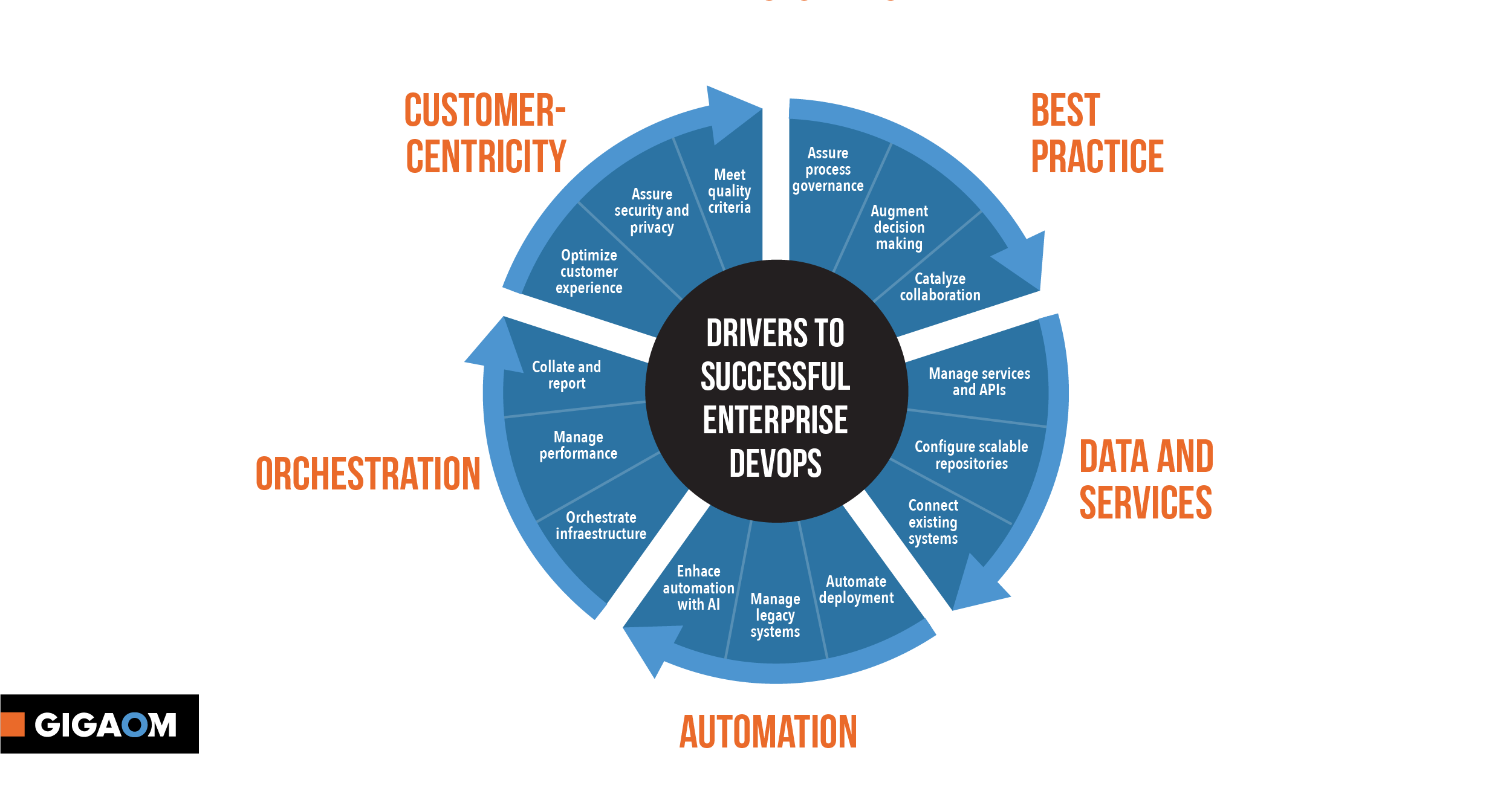Table of Contents
- Summary
- Why Enterprise DevOps and What Makes It So Hard?
- Shift to Customer-Centricity
- Optimize Customer Experience
- Test Quality and Non-functional Criteria
- Assure Security and Privacy
- Deliver Agile Best Practice
- Assure Process Governance
- Augment Decision Making
- Catalyze Collaboration
- Connect Data and Services
- Integrate and Connect with Existing Systems
- Create and Manage Scalable Data Repositories
- Manage External Services and APIs
- Automate Development and Delivery
- Automate the Development Pipeline
- Migrate and Manage Legacy Systems
- Enhance Decision Making and Automation Through AI
- Orchestrate and Operate Infrastructure
- Orchestrate Infrastructure
- Monitor Events and Performance
- Collate and Report to Stakeholders
- Conclusion
- About Jon Collins
- About GigaOm
- Copyright
1. Summary
Scaling DevOps: Addressing the challenges and enabling DevOps to deliver on its potential in the Enterprise
This report covers enterprise drivers, pain points, and contextual factors that make DevOps both essential and difficult to achieve in larger organizations.
DevOps brings a number of benefits to enterprises looking to deliver technology-based solutions more quickly. It can increase business value and reduce costs by: enabling new ideas to be tested, adopted or adapted; bringing engineering and business teams together; reducing time to market; shortening development cycles; increasing responsiveness to new requirements, incidents, and threats; and reinforcing a brand’s position as leading-edge and customer-focused.
The five fundamental pillars to Enterprise DevOps enable the model to broaden outside of individual initiatives. They include: considering the need to shift to customer-centricity; delivering agile best practice; connecting data and services; automating deployment and delivery; and finally, orchestrating operations infrastructure.
In each of these areas, the challenges of enterprise business-as-usual cause what might be termed “DevOps Friction,” that is, overheads that risk slowing down DevOps cycles and therefore undermining the benefits it can bring. A wide range of tools and technology vendors exists to respond to each of these challenges.
While many tools exist to support DevOps, the litmus test for their effectiveness is how much friction they remove from the development pipeline, increasing efficiency without undermining governance, for example, through self-service or rules-based decisions.
In order to deliver a comprehensive DevOps solution, enterprise decision makers must evaluate their breadth of needs over the next one to three years. Then they must limit their field of vision to the subset of capabilities that will meet the majority of their requirements, which includes setting a target platform strategy, a delivery strategy, and a toolchain strategy in response.
The DevOps approach is fundamental to what is currently being called digital transformation. To be clear, a transformation to the digitally-enabled enterprise is also a transformation to using DevOps: either both will succeed, or both will fail. And just as digital transformation requires executive buy-in, so does DevOps.
In the future, it is likely that a common set of practices and standards will emerge from DevOps; that the market landscape for tools will consolidate and simplify; and that infrastructure platforms will become increasingly automated; a symptom of all three will be the increasing use of AI. We would therefore advise any enterprise to embrace the principles of DevOps, which are unlikely to change, whilst seeing any toolchain as an enabler to delivering on DevOps today.
